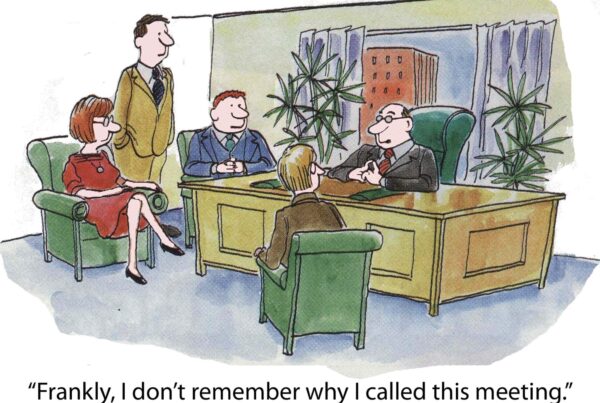Last Updated on March 6, 2024 by Dave Schoenbeck
Developing and implementing a competitive pricing strategy for your business is vital to stay in the game long-term.
Your pricing strategy will affect the goals you can set and achieve, your profit margins, and how you market your products to your consumers.
However, determining effective pricing strategies isn’t as easy as it seems. It would be best to consider your target audience, competitors, the demand for your products, and overall market trends that could impact your sales, among other factors. In addition, before choosing your business’s best pricing strategy, you must know what options are available.
Different Types of Pricing Strategies
There are many different business pricing strategies on the market. You encounter some of them whenever you go to the grocery store or purchase a new cable or Internet package. However, not all of them will work for every type of business. Here is a list of the most common and effective pricing strategies that you’ll encounter in the wild:
- Discount pricing strategy: Setting a price, then temporarily marking down that price for a special sale or promotion. This creates a sense of urgency that encourages customers to buy.
- High-low pricing : Charging a higher price for an item when the demand is also high but lowering the price as demand decreases.
- Market penetration pricing: Initially offering a product for a low price to penetrate the market and set yourself apart from competitors, potentially raising the price later.
- Psychological pricing: You see this all the time in retail stores—marking an item as an insignificantly lower price, such as $4.97 instead of $5, to trick the mind into thinking it’s more affordable. Many sellers use varying last pirce digit to signify different meanings to the staff.
- Premium pricing : Artificially inflating a price to make a product seem exclusive and aspirational.
- Dynamic pricing: Adjusting the pricing up or down as the market changes. It’s wise to make these adjustments occasionally, even if this isn’t your primary strategy. This is sometimes called variable pricing. Many companies change their pricing based on demand. For example, think about a seasonal beach or hotel business that flexes pricing based on the week of the year.
- Leader pricing: Setting a low price, even taking a loss, introducing customers to your brand or product for the first time.
- Cost-based (cost plus) pricing: Pricing your product so that you’ll turn a profit once you account for materials and labor costs. This is a very standard pricing model.
- Value pricing: Setting your prices based on how much your target audience thinks your product is worth. This requires some market research to pinpoint.
- Competition-based pricing: Pricing your products based on how much your competition charges for theirs (ideally offering a better value than theirs).
- Price skimming pricing strategy : This competitive pricing strategy involves setting your prices at the maximum of your target audience’s pay, then slowly lowering it over time as those customers drop off to target new audiences.
- Everyday low pricing: Walmart is famous for this pricing strategy, wherein you offer a low price daily without making customers wait for a sale or special occasion.
- Demand-based pricing is self-explanatory—setting prices based on your perceptions and studying customer demand observations.
- Differential pricing : Setting customer prices based on various factors, such as age, veteran status, loyalty programs, etc.
- Product bundle pricing : Offering a discount when a customer buys multiple products. Have you succumbed to the buy one, get one free offer?
- Geographical pricing: Setting different prices for different geographic locations.
- Promotional pricing: Temporarily reducing the price of a product due to a sale, special event, or another kind of promotion.
- Captive pricing: Charging what you want for a product or service because people will have no choice but to buy it. This only works if you have no real competitors.
- Freemium pricing: Offering a basic or limited version of your product for free, with customers later paying for more or better features. This can include offering a free trial.
- Decoy pricing: Adding a less appealing option when comparing several items. The idea is to add a less valuable decoy than the higher-priced item.
- Unlimited pricing: This could be all-you-can-eat or ski all season for one price.
- A la carte/drip pricing: The value airlines use this with a cheap entry ticket and add additional services for a fee. Customers underestimate how much the fees add, so your pricing impression is lower.
- Pricing by unconventional time increments: A lower price is offered for nontraditional use periods. Early bird movie tickets or travel during off hours
- Payment over time pricing: Examples include car loans, party tents, etc.
- Prepaid plans pricing: An example is a prepaid hotel or car rental that can’t be changed or canceled.
- Capped or flat rate pricing: Moving companies use this as a single price to move your home.
- Future options pricing: Travel companies use this to lock in your price before purchasing.
- Volume pricing: Furniture retailers use a buy more and save offer.
- Progressive pricing: The price goes up as time goes on same-day tickets or discounts for advance conference registration.
- Auction pricing: Priceline and eBay are famous for this approach.
- Subscription pricing: Streaming services and home meal kits are great examples.
- Initiation fee pricing: Perfect examples are a country club and gym memberships
Some of these strategies are less savory than others, but I’ve included them because many businesses choose to do it. You should know your competitors’ effective pricing strategies to adjust yours accordingly.
What is the Best Pricing Strategy for a New Business?
Your competitive pricing strategy will depend on your product, the market, your customer base, and various other factors unique to your company. However, for a business that’s just starting, there are a few things you might want to consider.
First, you’ll have less leeway because you haven’t yet established a reputation for your brand or product. Because of this, you’ll be limited in terms of the most common pricing strategies you can realistically choose from. Freemium pricing is a great option, as it allows your customers to experience a taste of your product without committing to a high price point.
Initially, you might want to consider strategies that involve setting your prices lower than your competitors to encourage their customers to give your product a try. Market penetration pricing was designed to help with this very tactic.
Once you’ve established your place in the market, you can branch out to other effective pricing strategies. In addition, it will be easier to keep up with your competitors once you’re widely known as an alternative.
Remember that customer loyalty is the ultimate goal of whichever competitive pricing strategy you use in the long run. As a result, the pricing strategy that nets you the most income might not be the one that encourages your target audience to return time and time.
Don’t get so hungry for profit that you isolate the customers who support you or resort to shady sales tactics. Ultimately, the most effective pricing strategies are the ones that allow you to operate your business with integrity and brand consistency.
Determining a pricing strategy for your business can take some trial and error. An outside perspective can be a valuable resource. Please fill out my contact form for a complimentary coaching call with a professional business coach that can help you develop and refine your competitive pricing strategy. I am not a fan of arbitrarily pricing at the low end of the market. Pricing is about imagery, and I like helping companies interested in positioning their business differently rather than just the cheapest.
Coach Dave



